
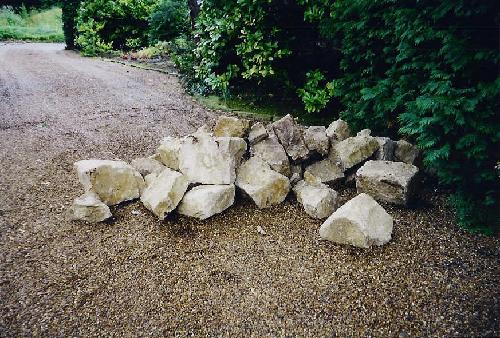
The Conifer Beds
This part of the garden is dominated by mature Scots Pines. Over the year these have had the effect of rendering the soil very poor due to both the presence of their root structure and the fact that the shedding of their pine needles makes it rather acidic. There were a large number of Laurels which had become too large and 'leggy' that we decided needed to be cut down. The decision was to replace them with a number of conifer beds - and to improve the quality of the soil for the new planting these would be delineated by circles of large stones such that the area they circumscribed could be filled with a raised layer of new top soil and compost.


Beginning work on cutting down the Laurels
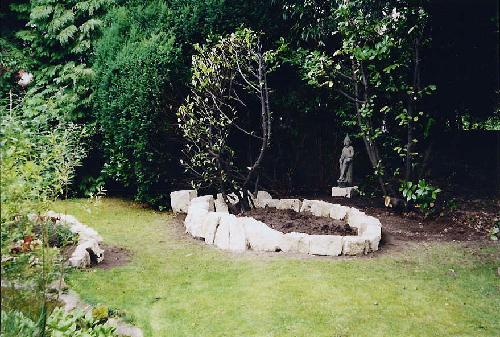
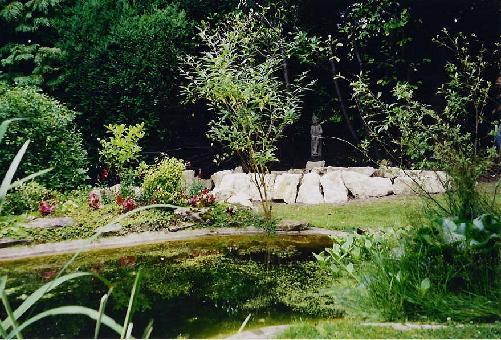
Setting the boundary stones for the first bed
The idea with this bed is that we would cut most of the Laurel back but use the remainder together with an existing Yew bush to form a tunnel leading to a shaded spot where a statue of a pixie would stand. The whole idea was to form an area that one would need to explore to come upon something unexpected.
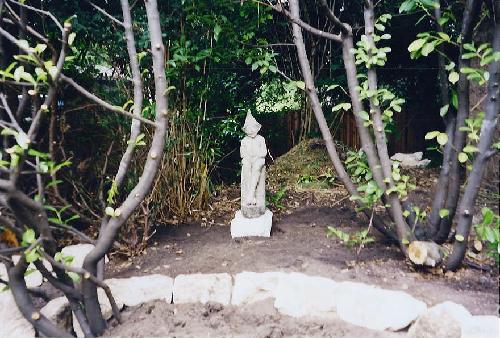
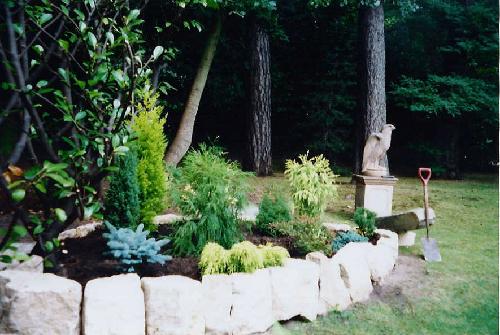
The conifers planted in the first of the beds
After setting the stone border of the new bed we placed the pixie in a small cleared glade. The remaining Laurels which had been pruned back hard can be seen in the foreground. We chose a selection of conifers varying in height, shape, colour and growth habit.
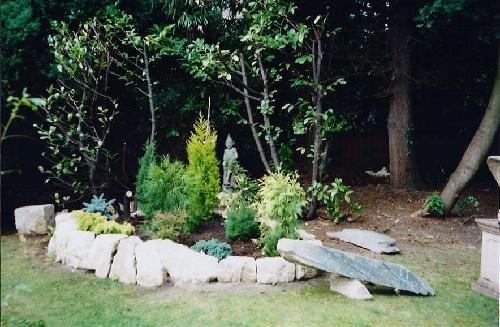
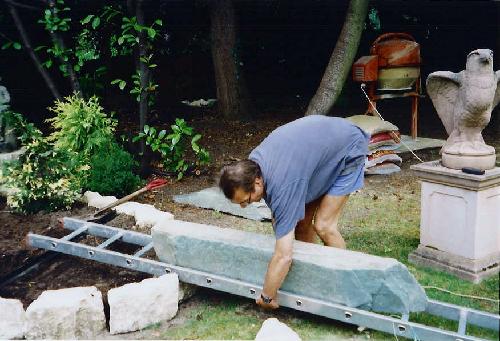
The granite monoliths being moved into position
As a feature to this bed we selected two green granite monoliths - an idea we took from a show garden at The Hampton Court Flower Show. These were extremely heavy and needed to be rotated into an upright position with their bases set in concrete. The technique used was not dissimilar to that used by the ancient Egyptians to erect obelisks.
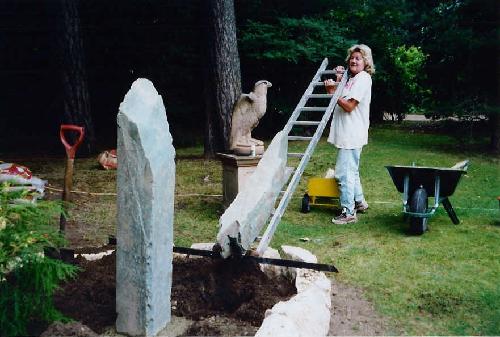
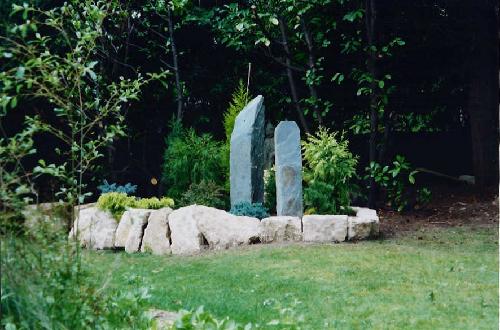
Using an angle-iron as a fulcrum to upright the monoliths
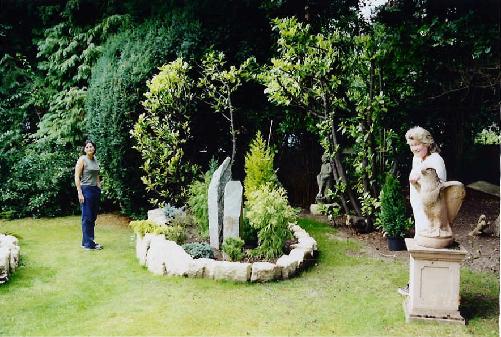
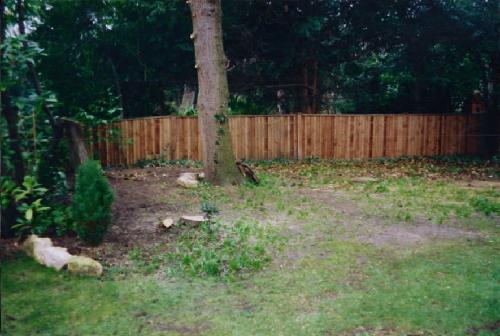
The first bed finished and the site cleared for the second
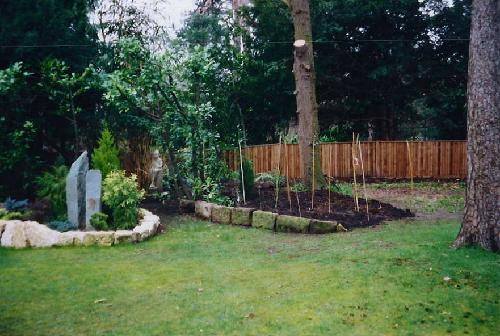
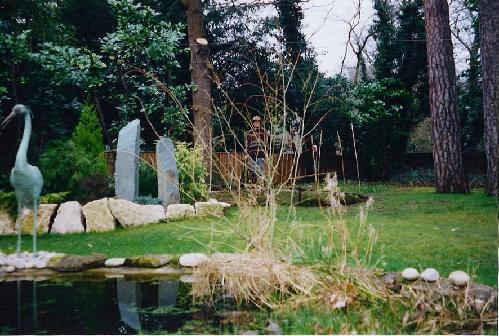
The border stones in place for the second bed and the position of the planting marked with stakes
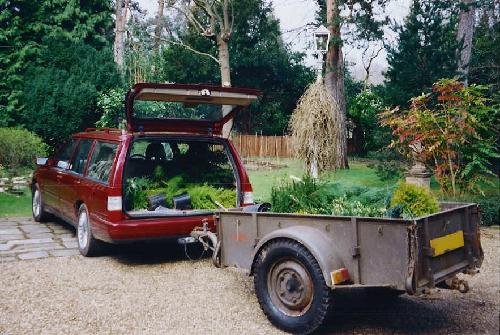
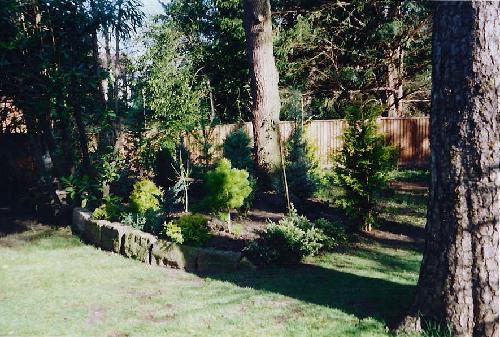
Planting up the second bed
We chose taller, faster growing trees on the right-hand side of this bed to form a screen to obscure the boundary. We also planted a red-flowered Rhododendron and an Acer in this bed, which would give a glorious red colour in the Autumn.
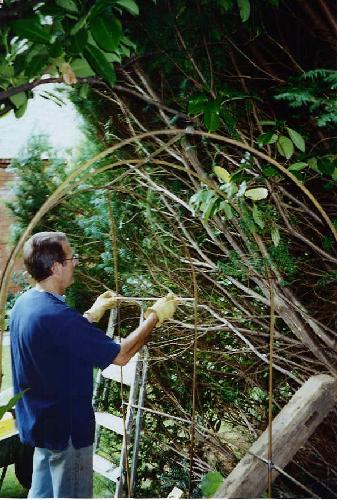
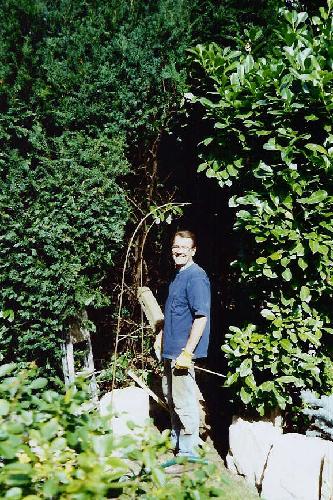
Making the frame-work for the tunnel
The tunnel was to be formed partly by one of the existing Laurels together with a Yew tree. A steel archway was made to provide a support so that eventually a tunnel would be formed leading to the pixie. The branches were tied in to cover the steel frame-work.
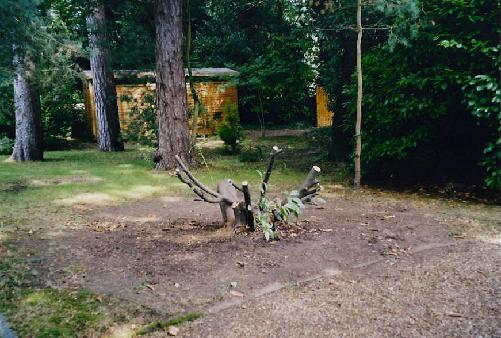
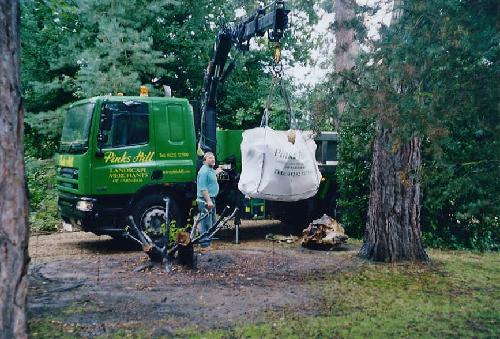
The Laurel in the third bed cut back hard - and the delivery of stones
The third of the conifer beds in this part of the garden bordered the driveway and was to have at its centre another Laurel, which was again cut right back.
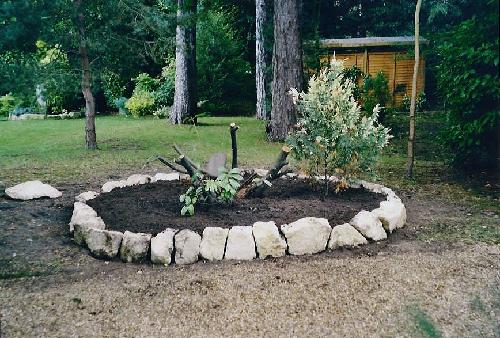
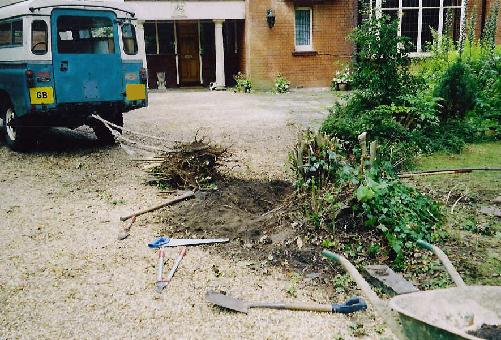
Stones set around the periphery of the bed - and dragging out the root bole of the holly
By the side of this bed and also bordering the drive was a very large holly bush which we cut down and finally extracted by tugging out the roots using a LandRover.
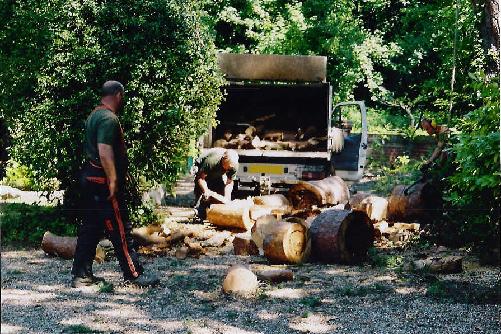
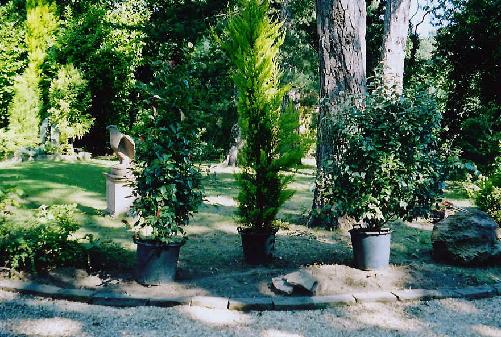
Taking down one of the Scots Pines that had become hollow - and the evergreens chosen to replace the holly.
Unfortunately one of the Scots Pines in this part of the garden had become rotten in the centre and sadly had to be felled for safety reasons.
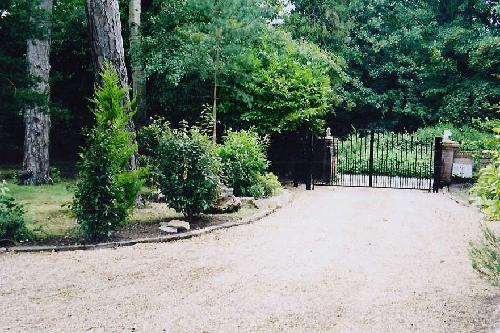
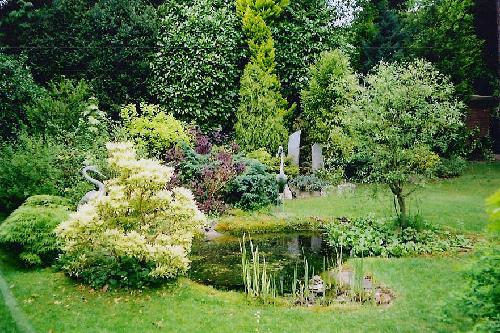
The beds bordering the drive complete - and looking across the pond to the first of the conifer beds
The right hand picture above shows the first conifer bed about three years after it was planted.
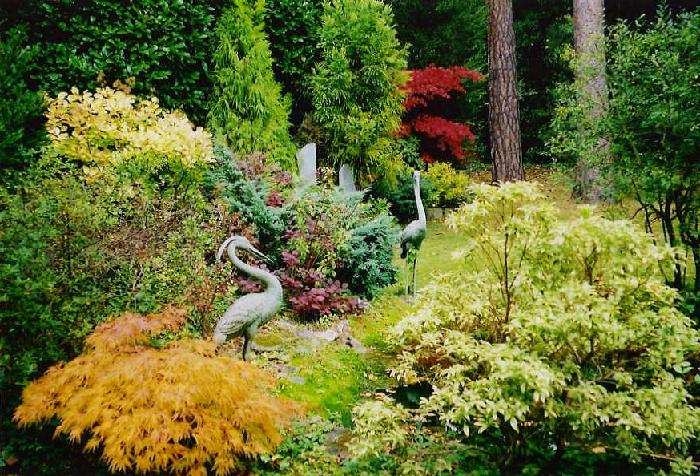
Autumn colours showing the Cotinus Corrygria and Acers at their best